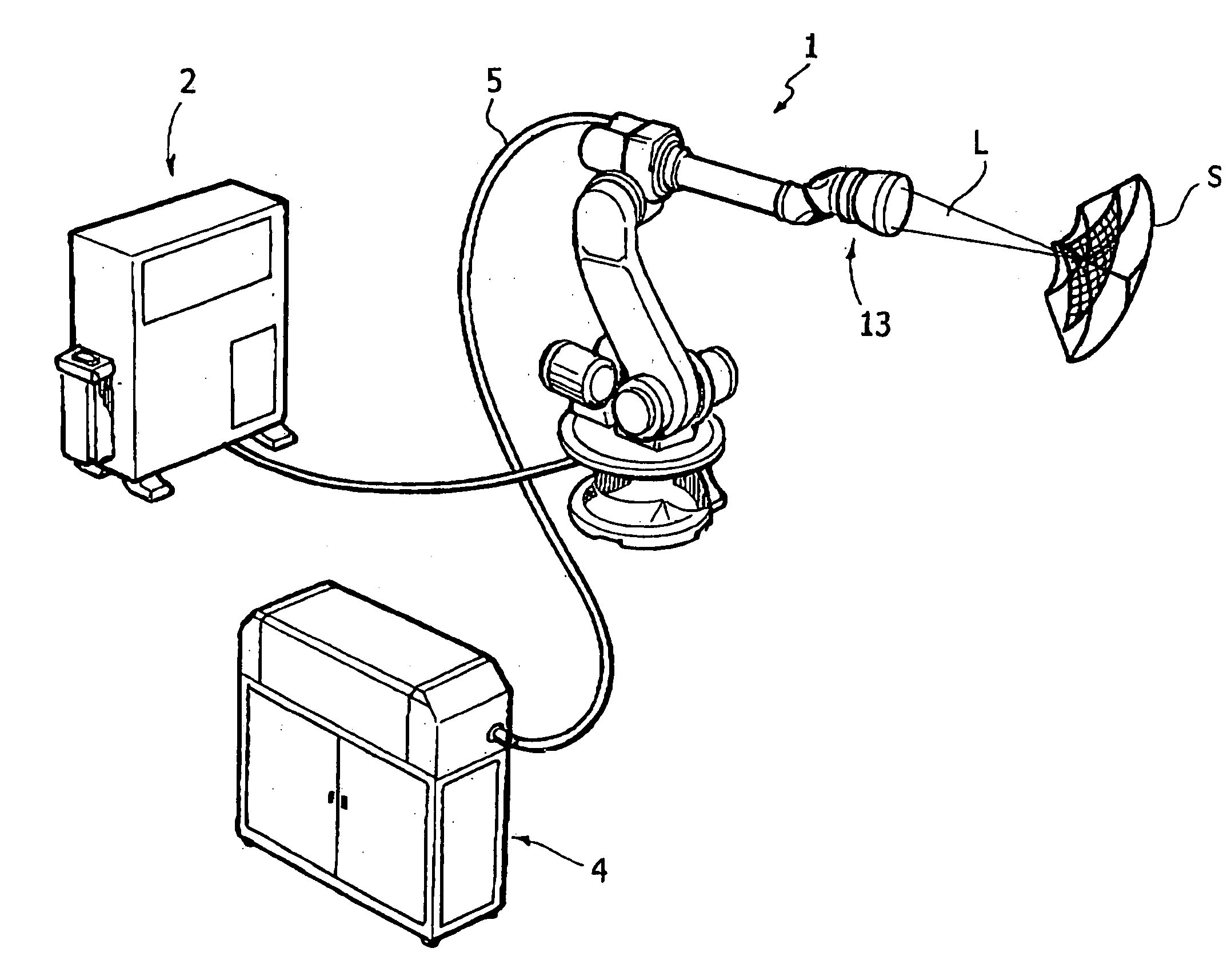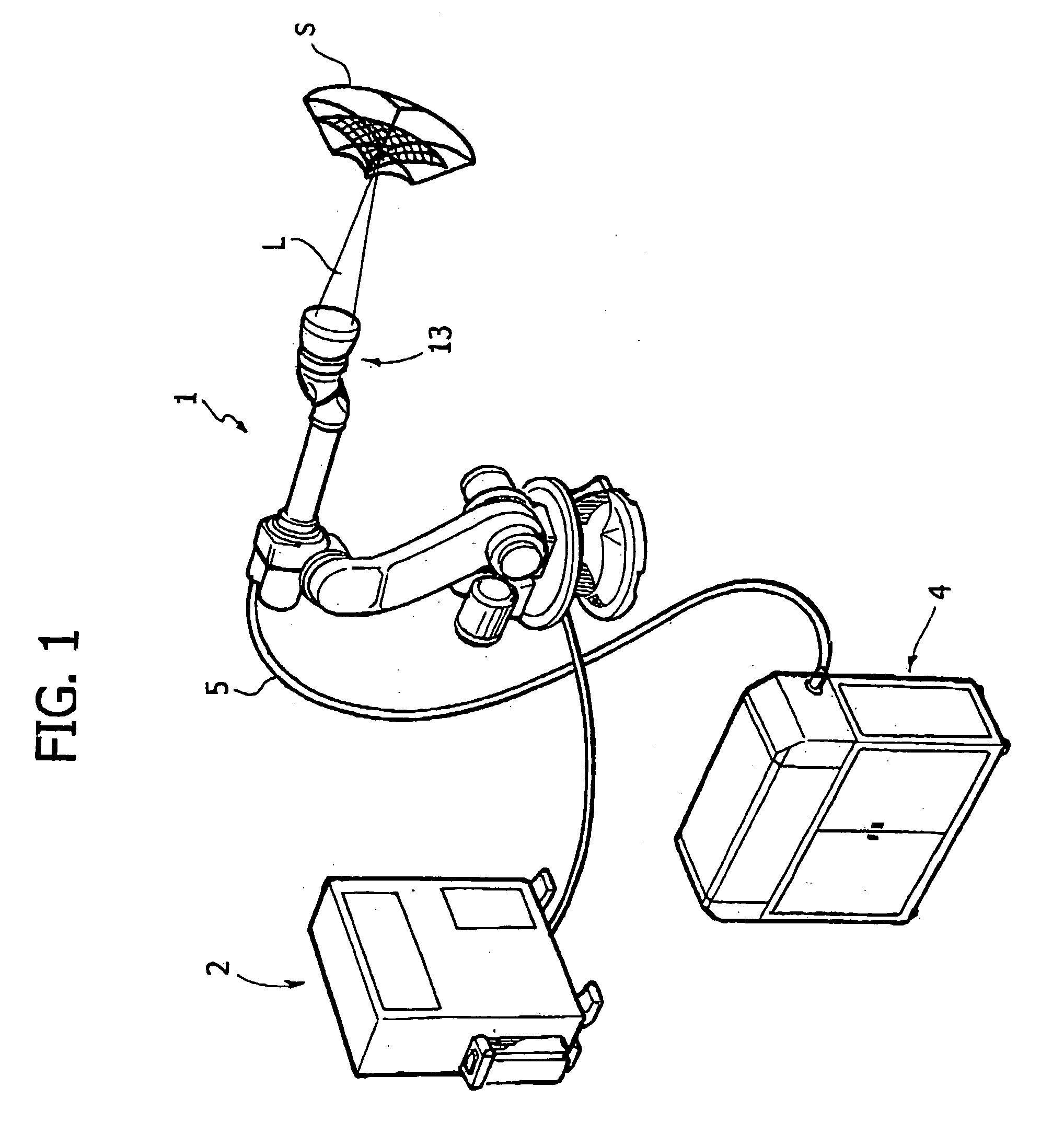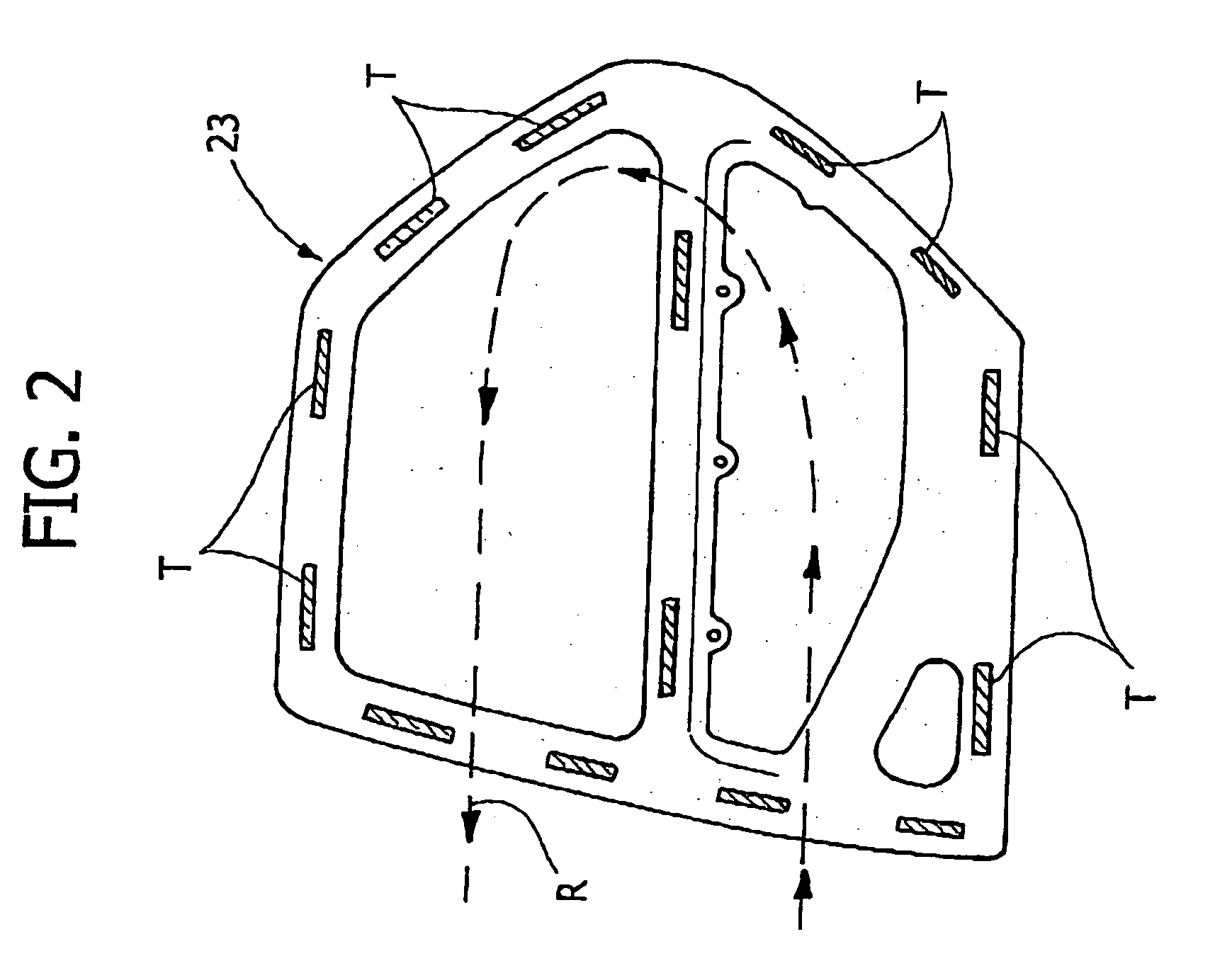Method and device for laser welding
a laser welding and laser welding technology, applied in lasers, instruments, manufacturing tools, etc., can solve the problems of limited number of pieces, difficult to obtain good welding, and not particularly wide diffusion of laser welding for said applications, and achieve the effect of reducing production times and high welding quality
- Summary
- Abstract
- Description
- Claims
- Application Information
AI Technical Summary
Benefits of technology
Problems solved by technology
Method used
Image
Examples
Embodiment Construction
[0022] In FIG. 1, the reference number 1 designates, as a whole, a manipulator robot of any known type. The present applicant has for some time now produced and marketed manipulator robots of an “anthropomorphic” type, which use a set of elements mounted so that they can turn or are articulated with respect to the others according to a respective set of axes (typically six). To each of said axes there is associated an electric control motor. The electric motors are controlled by a control unit 2 connected to the robot. The unit 2 is able to control the electric motors so as to move, in space, the articulated structure of the robot carrying the extreme end of the robot, or “wrist” of the robot, in any point of a space of predetermined shape and dimensions. In the case of the first embodiment of the invention, in the end element of the robot there is integrated a device 3 for focusing and orienting the direction of aiming of a laser beam. The robot 1 is in fact associated to a laser g...
PUM
| Property | Measurement | Unit |
|---|---|---|
| areas | aaaaa | aaaaa |
| speed | aaaaa | aaaaa |
| focusing distance | aaaaa | aaaaa |
Abstract
Description
Claims
Application Information
 Login to View More
Login to View More - R&D
- Intellectual Property
- Life Sciences
- Materials
- Tech Scout
- Unparalleled Data Quality
- Higher Quality Content
- 60% Fewer Hallucinations
Browse by: Latest US Patents, China's latest patents, Technical Efficacy Thesaurus, Application Domain, Technology Topic, Popular Technical Reports.
© 2025 PatSnap. All rights reserved.Legal|Privacy policy|Modern Slavery Act Transparency Statement|Sitemap|About US| Contact US: help@patsnap.com



